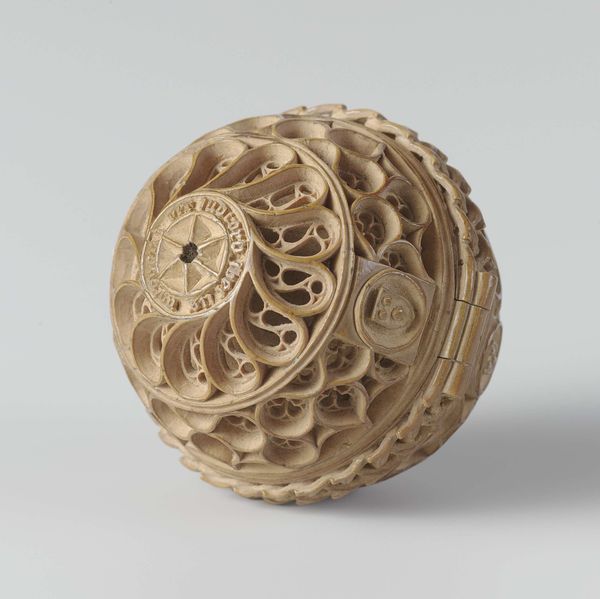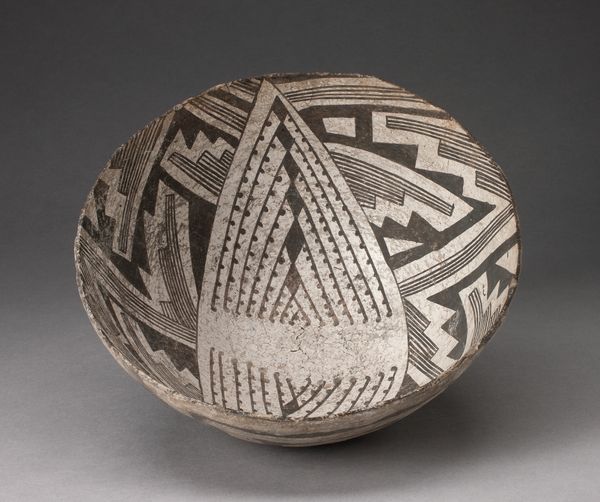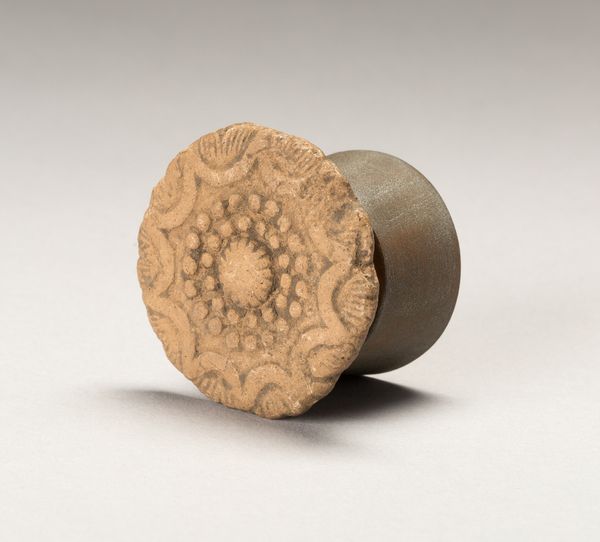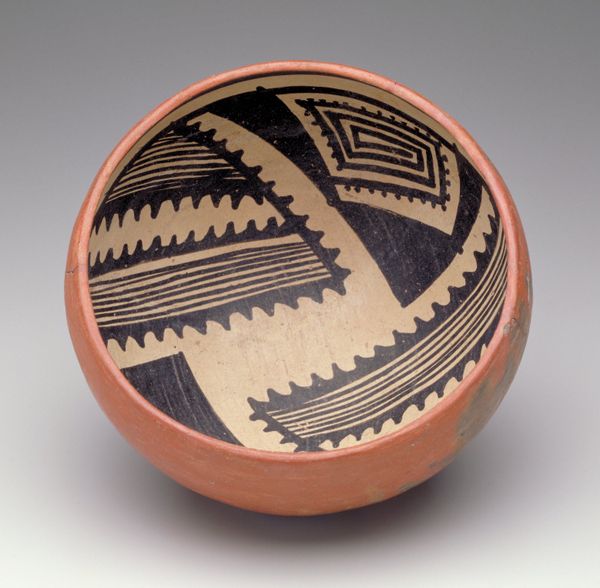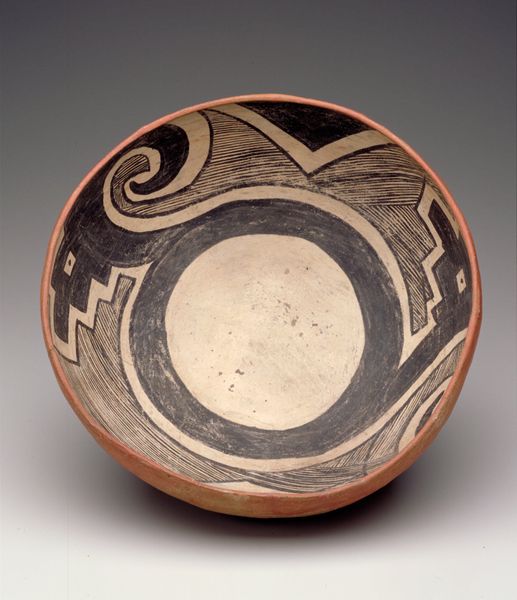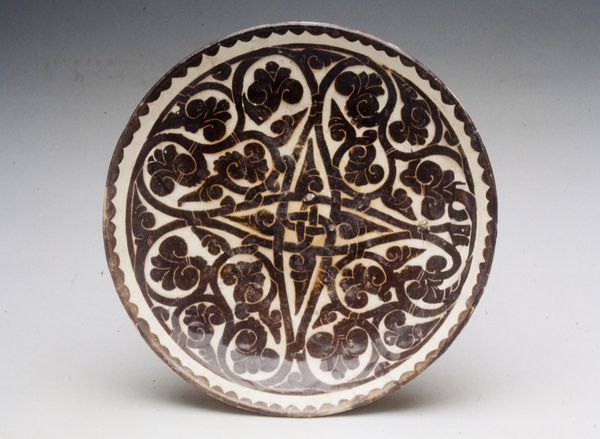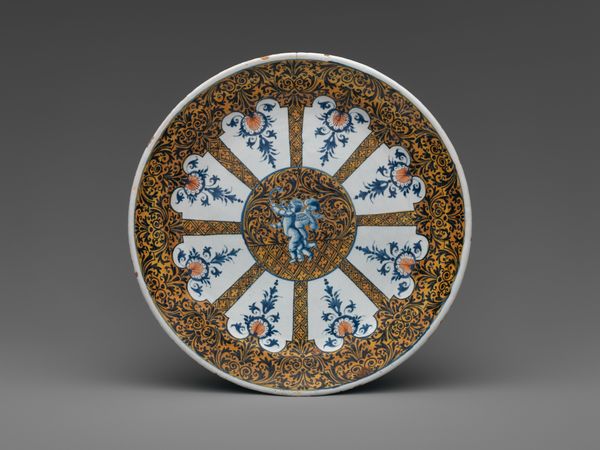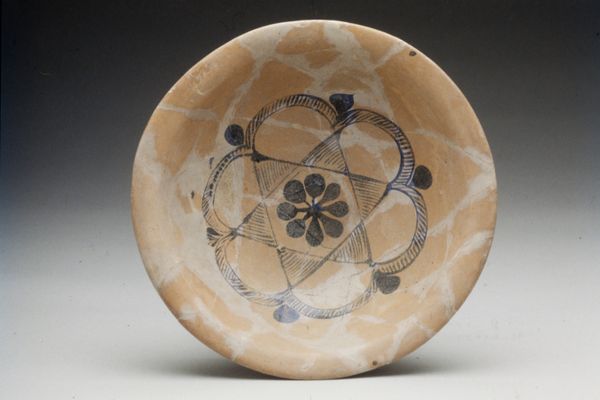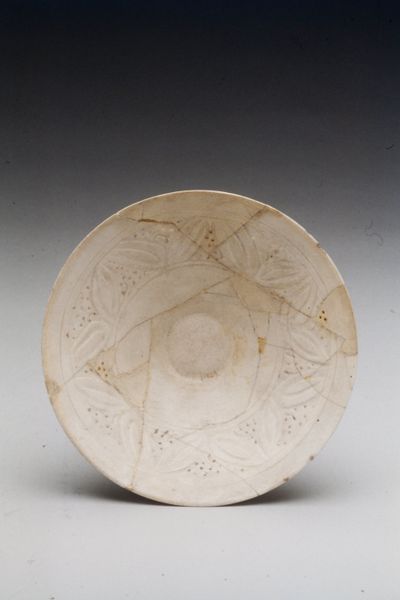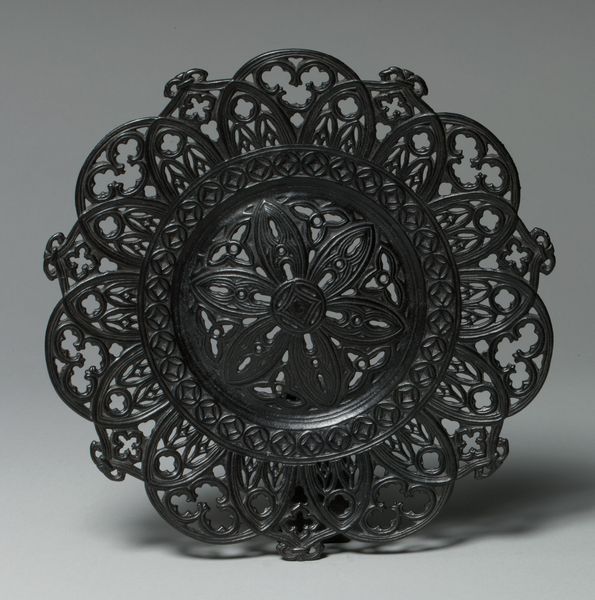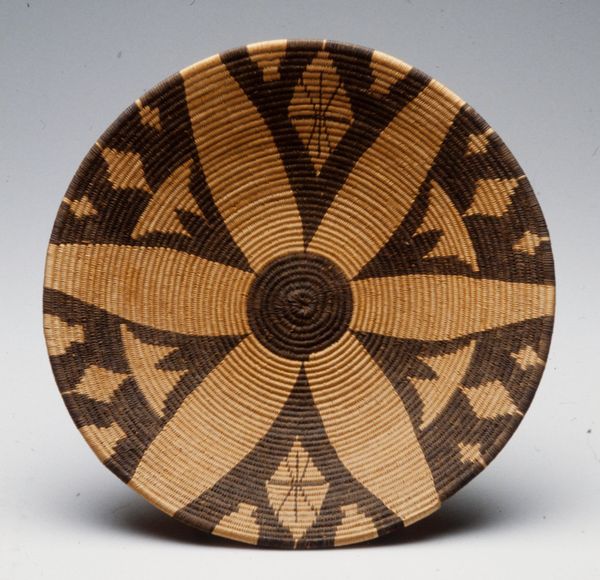
carving, sculpture, ivory
#
carving
#
geometric
#
sculpture
#
ivory
Copyright: Public Domain
This Kapkap at the Minneapolis Institute of Art is a striking example of indigenous artistry. Crafted from contrasting materials, it consists of a large, flat, circular disc of polished ivory, overlaid with an intricate openwork design made of dark, possibly tortoiseshell or wood. The design features a central square containing a cross, surrounded by concentric circles of geometric patterns. The power of this work lies in its formal structure and the semiotic potential of simple shapes. The interplay between the solid, opaque ivory and the delicate filigree generates a compelling tension, destabilizing the distinction between form and void. The circular shape might evoke cosmological symbols found in many cultures, while the cross suggests orientation. As a visual object, the Kapkap presents a system of signs. The structure of the artwork invites us to consider how cultural meanings are encoded and decoded, always shifting and open to re-interpretation.
Comments
minneapolisinstituteofart almost 2 years ago
⋮
The brown, lace-like discs attached to the white clam shells of these ornaments are made of tortoiseshell. When boiled, tortoiseshell becomes pliable and can be cut into patterns. The marble-like shell of the giant clam is a technically challenging medium, nearly as hard as stone. The art of working it reached a peak on the Solomon Islands in Oceania. The ornaments, called kapkap, were used as exchange goods throughout the region, and are still worn today at festivals, signifying personal wealth and status.
Join the conversation
Join millions of artists and users on Artera today and experience the ultimate creative platform.
